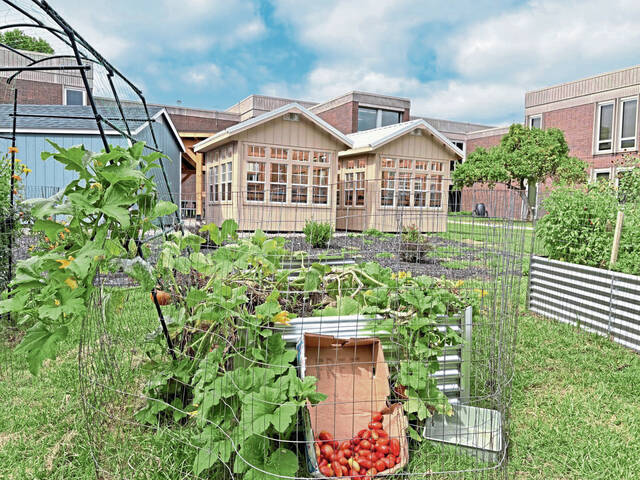https://triblive.com/opinion/wanda-wilson-and-reps-arvind-venkat-and-mandy-steele-why-solar-power-makes-sense-for-pittsburgh-area-schools/
Wanda Wilson and Reps. Arvind Venkat and Mandy Steele: Why solar power makes sense for Pittsburgh area schools

The school year is well underway here in Pittsburgh, and students are learning new things every day. But one thing remains the same: the rising cost of electricity here and all across Pennsylvania. This could leave some school districts facing tough decisions on how to prioritize expenses and looking for ways to save money.
Luckily, a new study shows that one way that school districts can save money on their energy bill is by powering their buildings with cost-saving, clean solar power. Incorporating solar can be a triple win for schools: It helps school districts’ bottom line, reduces climate and air pollution, and increases energy reliability.
A new PennEnvironment Research & Policy Center report laid out a strong case for these potential benefits. “Solar Schools: Repowering Education with Clean Energy” found that of the roughly 5,000 schools in Pennsylvania, there’s a combined total of nearly 2,000 football fields’ worth of rooftop space. PennEnvironment estimates that if solar panels were installed on all that available space, it would produce enough electricity to power more than 187,000 Pennsylvania typical homes — each year.
The report notes that if Pennsylvania used its full potential for school-based solar panels, our schools could save approximately $342 million over 25 years. It would also protect them from the impact of rising — and increasingly unstable — electricity rates, a pressing issue in Pennsylvania.
Energy bills are currently the second largest cost for U.S. schools after teacher salaries — around $8 billion annually nationwide. But solar (which has dropped in price by 70% since 2000 and increased in efficiency) offers a way to bring costs down instead of cutting teacher salaries or school resources.
Here in Allegheny County, the study estimates that there’s rooftop capacity to generate enough electricity to power over 15,000 homes and save our schools over $44 million over the lifetime of the panels.
One place that’s taking advantage of this cost efficient resource is the Highlands School District, which received funding to add solar panels to its greenhouse. The panels will completely offset the electricity needs of the greenhouse and are predicted to save the school district $70,000 over the next 25 years.
But Highlands isn’t an isolated case. Across Pennsylvania, K-12 schools are popping up with solar panels on their rooftops, over their parking lots, or out in their fields.
And this isn’t only good for schools’ pocketbooks: the PennEnvironment study estimates that these solar installations also help reduce climate pollution equal to taking nearly 300,000 cars off the road each year.
That can make a big difference both here and across the state where approximately 1 out of every 13 children suffers from asthma and where 17 counties, including Allegheny, were given an “F” grade for particle air pollution in a 2025 report from the American Lung Association.
Helping our kids — and all of us — breathe easier is reason enough to have our schools “go solar,” but there’s more.
Schools are the perfect place for solar because they often have large, flat, unshaded rooftops, as well as parking lots and nearby open spaces — all of which can be ideal locations for solar panels.
So while students are busy learning in the classroom, directly above and around them solar panels can be busy soaking up and storing energy from the sun, reducing our reliance on energy sources like oil and gas that make our climate more extreme and volatile.
And if the financial sense, health benefits or ease of installation aren’t enough reasons for your school to go solar, here’s one more: Solar on schools helps students become familiar with this future energy source in a direct, hands-on way, hopefully inspiring them to support clean energy and contribute to its future development. Today’s solar school students can be tomorrow’s solar advocates, entrepreneurs, installers and designers.
To make it as easy as possible for schools to “go solar” in Pennsylvania, officials should take some commonsense steps, including renewing and expanding the state’s Solar for Schools grant program, restoring federal solar incentives that Congress recently repealed and implementing parts of Gov. Josh Shapiro’s statewide energy plan.
When we drop our kids at school or wave them onto the bus in the morning, we hope that they are going to places where they will learn, play and succeed.
By installing solar on rooftops and surrounding land, schools can also be a bridge to a better future for us all. Repowering Pennsylvania’s schools with solar energy will pay dividends for local taxpayers, our health and our planet.
Wanda Wilson is Western Pennsylvania advocate for PennEnvironment. Rep. Arvind Venkat, a Democrat, represents District 30. Rep. Mandy Steele, a Democrat, represents District 33.
Copyright ©2025— Trib Total Media, LLC (TribLIVE.com)
